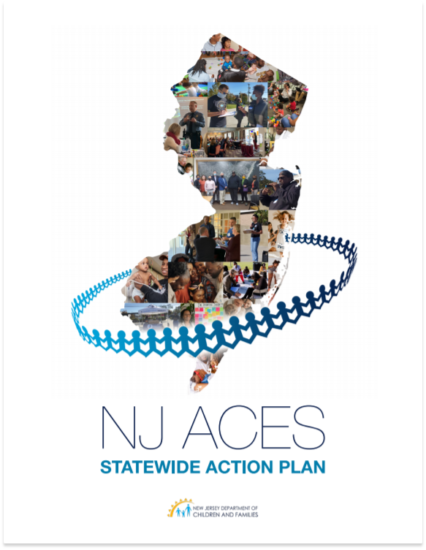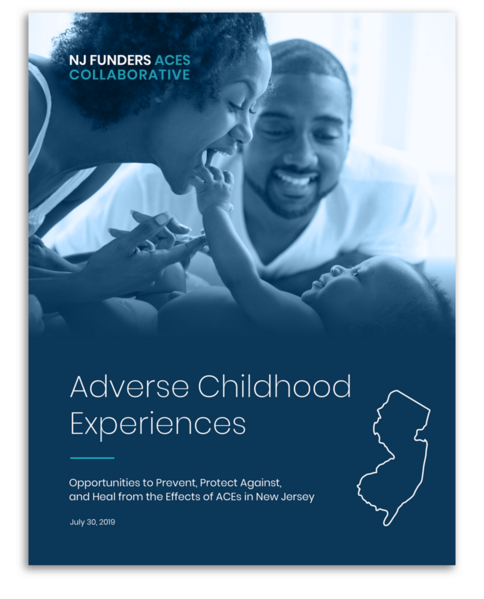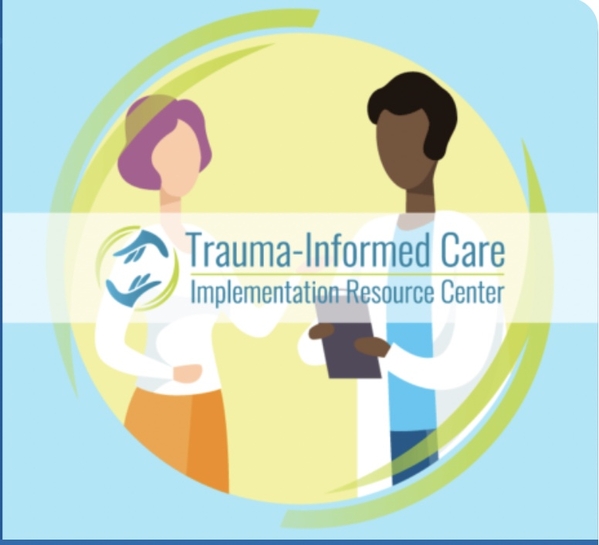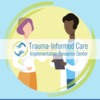Kamala Allen, vice president, program operations and child health quality, Center for Health Care Strategies (CHCS) and principal investigator, CDC PACEs: D2A award to CHCS. Liz Buck is project director.
_____________________________
“The timing couldn’t have been more perfect,” says Kamala Allen, principal investigator for the New Jersey-based Center for Health Care Strategies (CHCS). She was referring to the award from CDC’s Preventing ACEs: Data to Action (PACE: D2A) of $400,000 per year for two years “to build on what was started with philanthropic funding and to increase the focus on prevention.”
The CDC made initial awards to the states of Massachusetts, Georgia, and Connecticut and one non-profit, Michigan Public Health Institute, for $500,000 for each of the three years, and added $400,000 for each of the two years to Minnesota and the CHCS.

CHCS is a national organization that receives funding from a variety of sources, is well known for its policy expertise, and according to Allen, an organization that “cares a lot about what happens in New Jersey.” CHCS has a strong commitment to New Jersey, Allen says, and has developed relationships with funders and state agencies that contributed to the CHCS’ successful CDC PACEs: D2A application and its ability to meet the goals it has created for the project. CHCS’ PACEs: D2A page includes a list of partner organizations.
Background
After a meeting at the end of 2018, at Dr. Nadine Burke Harris was a featured speaker, the New Jersey ACEs Collaborative engaged the Center for Health Care Strategies to facilitate a process that centered the voices and experiences of communities and to produce a statewide plan to address ACEs for the state. The Collaborative comprises three foundations (The Burke Foundation, The Nicholson Foundation and Turrell Fund) and the New Jersey Department of Children and Families (DCF). The New Jersey ACES Statewide Action Plan was released on February 4, 2021 (see PACEs Connection story ACEs Action Plan launched to make New Jersey a trauma-informed/healing-centered state, February 9, 2021). The event included Dave Ellis, head of the New Jersey Office of Resilience, NJ Gov. Philip Murphy, First Lady Tammy Snyder Murphy, Lt. Governor Sheila Oliver, and the Department of Children and Families Commissioner Christine Norbut Beyer.
 Prior to the release of the action plan, the Collaborative issued a foundational report in July, 2019, Adverse Childhood Experiences: Opportunities to Prevent, Protect Against, and Heal from the Effects of ACEs in New Jersey, that detailed the challenges in New Jersey and identified areas of opportunity. The 2021 action plan builds on the years of work documented in the 2019 report and reflects the awakening that unfolded with the racial reckoning galvanized by the death of George Floyd in 2020 as well as the impact of the COVID pandemic.
Prior to the release of the action plan, the Collaborative issued a foundational report in July, 2019, Adverse Childhood Experiences: Opportunities to Prevent, Protect Against, and Heal from the Effects of ACEs in New Jersey, that detailed the challenges in New Jersey and identified areas of opportunity. The 2021 action plan builds on the years of work documented in the 2019 report and reflects the awakening that unfolded with the racial reckoning galvanized by the death of George Floyd in 2020 as well as the impact of the COVID pandemic.
The five core strategies included in the action plan were developed through a process that “really centered the voices of people who are most directly impacted by ACEs,” Allen says. The process included focus groups with individuals who were using programs to address housing insecurity and maternal and child health programs, for example, and with the business community as well as the education, law enforcement, and health care sectors. Then the focus group themes and learnings informed “learning labs” held in the northern and southern parts of the state to develop recommendations to prevent and address ACEs. Attached is a summary of the five core strategies.
New Jersey’s Goals for its PACEs: D2A work: Social norms change
Allen says prevention was included in the action plan along with strategies to mitigate the impact of ACEs but the CDC award is specifically about prevention. The cooperative agreement requires awardees to choose two of three core prevention strategies. CHCS chose two strategies focus on promoting social norms that protect against violence and adversity, and ensuring a strong start for children.
To meet the “social norms change” requirement, CHCS is building on the NJ ACEs Collaborative public education campaign—“Actions 4 ACEs”—to raise awareness and expand the messaging of ACEs. The campaign, originally funded by the Burke Foundation, focused on messaging to educators and law enforcement officers. According to Allen, the work of the cooperative agreement includes reaching the broader community, not particular sectors, and is meant to be reflective of the needs and voices of communities.
The “strong start for children” arm of the work is focused on evidence-based home visiting programs and according to Allen, CHCS will be working with the state to “supplement the current curricula for home visitor training to include a focus on ACEs and resilience.” Allen says that home visiting is a key strategy to build resilience and prevent ACEs in families, and that the new universal home visiting law will make this service accessible to all New Jersey families when implemented. The project will also bolster the role doulas and community health workers can play in ACE prevention.

The NJ home visiting law (S. 690, P.L. 2021, c.187) signed by Governor Murphy on July 29, 2021 establishes a statewide universal newborn home nurse visitation program housed in the DCF and offers every new family (including foster and adoptive families and those experiencing a stillbirth) with access to a cost-free postpartum home visit within two weeks of delivery. The bill includes an initial $2.7 million appropriation. The law requires that the newborn home nurse visitation program be implemented in a culturally competent manner and “be based on criteria established by the United States Department of Health and Human Services for an evidence-based early childhood home visiting service delivery model.” It also requires “an evidence-based evaluation of the physical, emotional, and social factors affecting a parent or parents and the parent’s or parents’ newborn infant, including, but not limited to, a health and wellness check of the newborn and an assessment of the physical and mental health of a person who has given birth.”
The home visiting law builds on a long-standing focus on early childhood in the state. The press release announcing the Governor signing the home visiting law notes that “In January 2021, First Lady Tammy Murphy unveiled the Nurture NJ Maternal and Infant Health Strategic Plan, which aims to reduce maternal mortality in the state by 50 percent over five years and eliminate the racial disparities in birth outcomes, in which a universal home visitation program was a key recommendation of the strategy.” According to Allen, “there is a very high level of commitment” in the state to improve maternal and infant health outcomes that includes training of the doula and community health worker workforces, applying what is learned from changes in home visitation training curriculum to include ACEs science.
Allen says that the proactive and personal engagement of the Governor and First Lady has been integral to New Jersey’s progress on ACEs prevention and resilience building. Both offices submitted letters of support for the CHCS application for CDC funding, along with 15 others, including state-focused funders, the Robert Wood Johnson Foundation, and numerous state agencies.
 Allen says that the Center’s application for CDC funding was successful in part because of this broad support—reflecting its commitment to collaboration—and its longstanding focus on trauma-informed policy and practice. This includes a project on applying ACEs research in the health care sector (see Early Adopters of Trauma-Informed Care: An Implementation Analysis of the Advancing Trauma-Informed Care Grantees) and establishing a robust resource center on trauma-informed care (Trauma-Informed Care Implementation Resource Center.) The website says that while it is geared toward health care settings, “many of the lessons herein can be applied elsewhere, including in child welfare services, community-based organizations, and educational settings.”
Allen says that the Center’s application for CDC funding was successful in part because of this broad support—reflecting its commitment to collaboration—and its longstanding focus on trauma-informed policy and practice. This includes a project on applying ACEs research in the health care sector (see Early Adopters of Trauma-Informed Care: An Implementation Analysis of the Advancing Trauma-Informed Care Grantees) and establishing a robust resource center on trauma-informed care (Trauma-Informed Care Implementation Resource Center.) The website says that while it is geared toward health care settings, “many of the lessons herein can be applied elsewhere, including in child welfare services, community-based organizations, and educational settings.”
New Jersey’s Goals for its PACEs: D2A work—Data to develop a statewide surveillance system and to inform prevention strategy implementation
The CHCS is working with the Camden Coalition of Healthcare Providers to satisfy the award’s requirement to improve or enhance the state surveillance system. The current statewide mapping of different sources of data will, says Allen, “let us know how we are doing to prevent and address ACEs and help us to tell the story to the broader public.” Mapping the data will help identify areas of the state with the greatest need and will be valuable in the short and long-term. The plan includes bringing together different adversity data sources to better understand need across the state and adding ACE-related questions to the Youth Risk Behavior Survey, administered by the Department of Education. Key strategies include using data from regional health hubs (Newark, Trenton, Passaic County that includes Paterson) and conducting an environmental scan of ACEs prevention strategies across state agencies.
The collaboration with state agencies—including the Department of Children and Families, the Department of Health, the Department of Education, and the Division of Medical Assistance and Health Services (administers Medicaid)—will serve to significantly expand the data the state will have to both identify areas of increased need, and to assess the impact of ACE prevention strategies long after the conclusion of the cooperative agreement. That is one of the lasting contributions CHCS looks to make through their participation in the program.
Partnership Activities
The CHCS Preventing ACEs Across New Jersey: Data to Action page lists project partners including the three regional health hubs along with the NJ Office of Resilience; five state agencies (Departments of Children and Families, Education, Health, Human Services); the Camden Coalition of Healthcare Providers; Prevent Child Abuse NJ (training partner); and Rutgers Center for State Health Policy (evaluation partner). The Office of Resilience, located within the Department of Children and Families is making ACE Interface training available to public, private, and community partners and aligning the work with implementation of the Statewide Action Plan. Prevent Child Abuse NJ is delivering Connections Matter training “to each community with the goal of reaching more broadly and deeper into the informal networks of parents’ groups, faith-based institutions, fathers’ groups, and other local stakeholder groups that connect with parents.” It is also providing the Trauma Transformation Initiative in one school or afterschool program in each of the three regions of the state and is hosting film screenings of “Spare the Child,” which will create dialogue around the impact of childhood corporal punishment.
Conclusion
During a December 15, 2021, Campaign for Trauma-Informed Policy and Practice (CTIPP) webinar, Phyllis Ottley, PhD, associate chief of program in CDC’s Division of Violence Prevention, National Center for Injury Prevention and Control, said the goal of PACE: D2A is to address and support statewide needs to measure and track and prevent ACEs because data is needed to identify what the problem is and where to intervene. She said that awardees are expected to first assess their current capacity to be able to monitor ACEs outcomes and indicators and then to determine how those strategies are actually working in the field. The outcome evaluation process should yield useful guidance to other states doing similar work.
The PACE: D2A awards have the potential to further energize an already blossoming movement of statewide community-based initiatives to address ACEs. (See the MARC survey report on ACEs, trauma, and resilience networks across the country). Congress appropriated $4 million in FY ’20 and increased it to $5 million in FY ’21 to fund PACE: D2A and “to inform how ACEs increase certain risk factors, such as substance abuse, suicide, mental health conditions and chronic illnesses,” Ottley said. The omnibus spending bill for FY '22, signed by President Biden on March 15, includes $7 million for the CDC to continue its work on adverse childhood experiences.
Lessons from the four states—Georgia, Massachusetts, Connecticut, Minnesota—and the two non-profits in Michigan and New Jersey—should provide practical guidance to others on how knowledge of ACEs can transform society’s intractable problems into solutions.
Articles on Michigan and Massachusetts have been posted here in PACEs Connection when those states were in the first year of the program. Articles on the Minnesota project appeared here on March 1 and Georgia on March 22. On the CDC PACE: D2A page, there are summaries for Connecticut, Georgia, Massachusetts, and the Michigan Public Health Institute (CDC summaries are coming soon for Minnesota and the Center for Health Care Strategies). The summaries cover surveillance activities, prevention strategies and approaches, and early successes during the first two years of the program.








Comments (0)